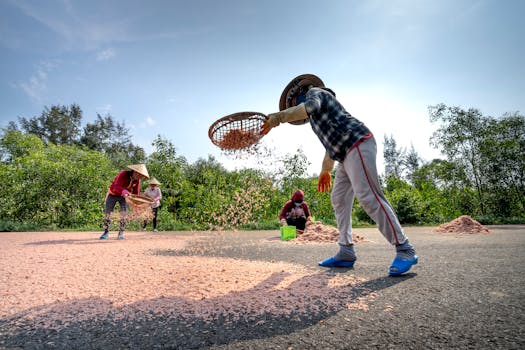
**
The European Union (EU) has launched a significant initiative to address the environmental and social challenges posed by the textile industry. A new working group, focused on creating a truly sustainable textile sector, is tasked with driving forward the EU’s ambitious sustainable textile strategy. This move signifies a major step towards a circular economy for textiles, tackling issues like textile waste, water pollution, and carbon emissions. The initiative is crucial for the future of the European textile industry, and the global fashion industry as a whole, impacting everything from sustainable fashion to circular economy textile recycling.
Addressing the Urgent Need for Sustainable Textiles
The EU's textile industry faces considerable scrutiny regarding its environmental impact. The production and consumption of textiles contribute significantly to global pollution, resource depletion, and greenhouse gas emissions. The industry is a major consumer of water, energy, and chemicals, leading to water contamination, air pollution, and land degradation. Furthermore, the prevalence of fast fashion and the short lifespan of many garments contribute to a massive amount of textile waste ending up in landfills or incinerators. This necessitates a radical shift towards more sustainable textile production, and the EU’s new working group is at the forefront of this change.
Key Objectives of the Sustainable Textile Working Group
The newly formed working group has several key objectives, including:
- Promoting sustainable textile production: This involves encouraging the use of eco-friendly materials, reducing water and energy consumption, and minimizing chemical usage throughout the production process. This includes exploring initiatives like organic cotton farming, recycled textile fibers, and innovative dyeing techniques.
- Improving textile waste management: The group will focus on strategies to reduce textile waste through initiatives like improved collection systems, enhanced textile recycling capabilities, and promoting circular fashion. The aim is to move away from a linear "take-make-dispose" model to a circular model where textiles are reused, remanufactured, and recycled.
- Enhancing transparency and traceability in the supply chain: The working group will strive to improve transparency across the textile supply chain, from raw material sourcing to the end product. This includes developing better supply chain traceability mechanisms and promoting ethical sourcing practices.
- Strengthening the EU's competitiveness in the global textile market: By promoting sustainable practices, the EU aims to strengthen the competitiveness of its textile industry, creating new opportunities for innovation and growth in a market increasingly demanding environmentally friendly products. This involves fostering innovation in areas like bio-based textiles and closed-loop recycling.
- Supporting the development of new technologies: The group will play a vital role in driving innovation and the adoption of new technologies in the textile industry, focusing on technologies that promote sustainability, efficiency, and reduced environmental impact. This includes funding research into advanced textile recycling technologies.
The Circular Economy: A Cornerstone of the Strategy
The EU's sustainable textile strategy is firmly rooted in the principles of the circular economy. This involves keeping materials in use for as long as possible, extracting maximum value from them, and then recovering and regenerating them at the end of their life. The working group will focus on developing and implementing strategies to foster a circular economy for textiles, promoting:
- Extended Producer Responsibility (EPR): EPR schemes hold producers responsible for the environmental impact of their products throughout their lifecycle, incentivizing them to design more sustainable products and manage their end-of-life.
- Textile recycling infrastructure: The EU aims to significantly improve the infrastructure for collecting and recycling textiles, ensuring that more textile waste is recycled rather than ending up in landfills. This includes investment in advanced sorting and recycling technologies.
- Consumer awareness and behavior change: Raising consumer awareness about sustainable textile consumption and promoting changes in consumer behavior, such as extending the lifespan of garments and choosing sustainable brands, are crucial elements of the strategy.
Challenges and Opportunities
While the EU's initiative is ambitious, several challenges lie ahead. These include:
- The complexity of the textile supply chain: Tracing and managing materials across the globalized textile supply chain presents significant challenges.
- Technological limitations: Currently, effective and economically viable technologies for recycling certain types of textiles are still under development.
- Consumer behavior: Changing consumer behavior and encouraging a shift away from fast fashion towards more sustainable practices will be crucial for the success of the strategy.
Despite these challenges, the EU's move represents a significant opportunity for the European textile industry to transform itself into a leader in sustainable manufacturing. It also provides an example for other countries to follow in tackling the urgent environmental issues associated with the global fashion industry. The creation of the sustainable textile working group signals a strong commitment to a greener future, benefiting both the environment and the European economy. The EU's strategy is likely to influence global efforts towards a more sustainable textile industry, setting benchmarks for eco-friendly textile manufacturing and impacting all sectors of the sustainable apparel market. The initiative's success hinges on collaboration between policymakers, industry players, researchers, and consumers to achieve a truly sustainable and circular textile system.




















